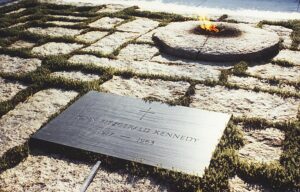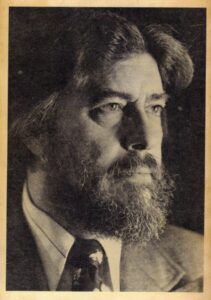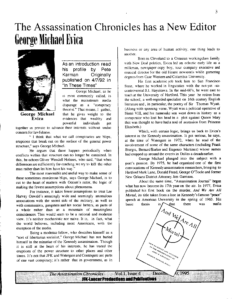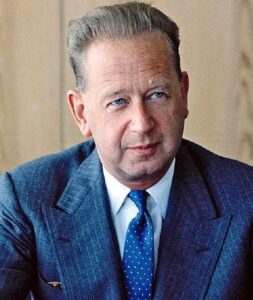26TH jfk
Before Taps
At Arlington National Cemetery
The afternoon of November 25, 1963
David R. Wrone January 2, 2023 no. 2
_____________________________________________________________________________________________
This was the noblest Roman of them all.
His life was gentle and the elements
So mixed in him that nature might stand up And say to all the world
“This was a man.”
–Julius Caesar
Act 5, Scene 5
A thick crowd of kings, presidents, foreign military, and notables trailing the several bands and marching units, muffled drums and flapping flags had crossed the Potomac River following President John F. Kennedy’s funeral cortege to attend his burial rites. They clustered near and around the grave site during the brief service.
Near the close and farewell, after the 21-gun artillery salute, the 26 members of the Irish Defense Guards specially flown in from the weeping isle of his ancestors who with their Lee-Enfield No. 4 rifles conducted the slow, silent, soul stirring Queen Anne’s Funeral Drill, a 350-year-old Irish salute to the battle fallen. As the Irish poet Quinlan wrote, ‘twas “Jackets green across the ‘bowl of tears’ from the plain of Liffey to a shield’s length of earth.” At 3.08 p.m. the army bugler blew taps but cracked the sixth harmonic note one too high. To a few it was a Banshee stutter, a keen for a great loss of one who had as “a heart, an acorn from an oakwood.” (8th century Irish ms.).
Before the last faint, silver notes of the 101-year-old military leave-taking to eternal rest had faded across the rolling rain swept green grass and over the seemingly endless, somber, vast rows upon rows of gray-white tomb stones patiently waiting for a comrade and had gently wafted over the new grave to close the burial ritual for the slain, most powerful man who had ever trod this faulted earth, three of the top pols in the nation had the day before, the 24th, solved the question of who had killed him on the 22nd.
Like the ancient Greek god Procrustes, they thrust down their spasm of a verdict upon the bereaved nation the solution. It was a tightly kept secret, known but to their mindless lieutenants who put its doctrines into military and political systems and for many years covertly and faithfully defended it from public knowledge to serve as the sterling predicate of later official inquiries.
Of the trio, in the political sphere stood the new president, Lyndon B. Johnson, in the legal system stood the Acting Attorney General Nicholas Katzenbach, and in the criminal investigative arena stood the Director of the Federal Bureau of Investigation, J. Edgar Hoover. With truth found by a few responsible critics who pieced it together through logs of desperate telephone conversations, careful Secret Service records, and footprints left in notes, we know they in one voice had decided who was responsible for the shooting at 12:30 p.m. the 22nd on the public street of a faraway dismal Texas city of Dallas.
The shooting had shaken Johnson who traveled with the Dallas presidential party. A little after 1:00 at the city’s Love Field he joined the shocked departing members who bordered the great silver, white, and blue, Air Force One, for the flight back to the capital. The plane, though, with motors running paused on the runway waiting for the new president who was somehow missing.
JFK’s military aide Godfrey McHugh looked everywhere in the plane for LBJ, only finally to find him in the rear toilet room sitting on the stool as a chair behind a drawn curtain weeping. Hysterically, he moaned to the Brigadier, “They are going to get us all. It’s a plot. It’s a plot. They are going to get us all.”
The politically astute Hoover reacted much differently than the new president. In his Washington office, he was distraught but acute, able quickly to think and immediately to judge on his feet. This we know from a phone call he got from the far west made by former Vice President Richard Nixon who recounted on a later television interview that he had telephoned J. Edgar Hoover “an hour” after the shooting to ask him who had shot Kennedy. (D Wrone, essay letter, “Nixon’s ‘history’ a memorable distortion,” Milwaukee Journal, May 2, 1984.)
In reply Hoover trotted out the old fascist boogeyman that had done him such good stead for many years as a lauded whore of the powerful troglodytic right in his rampant destruction of the liberal structure of the nation. He told the man who in four years would assume the presidency that “a communist” had killed him. He lied; but truth was a necessary stranger in order to protect the FBI as a political weapon of the far right. Reality did not matter.
Why did he lie? He had over decades with his propaganda machine incessantly pounded the minds of the nation, beguiled the plastic members of Congress, and especially promoted the diverse culture mechanisms with the belief his Seat of Government, as he called the FBI, kept them safe. Only a foreign system as culprit that he could not control could avoid a potential rupture of his power base derived, fueled, and celebrated by the nigh worshipful right through several decades of dedicated crushing of the democratic forces as the nation’s shield and buckler.
Observe the brazenness of the lie. Oswald was not arrested until 1:45 and not identified for some time, and further his complex background had not then been probed and defined, and he was not charged until the wee hours of the next morning, the 23rd. Furthermore, there were only six members of the communist party in Dallas, three of them undercover FBI agents, and none of them Oswald.
To be noted is the FBI anti-communist knowledge of Oswald; on one occasion the FBI office had informed an inquiring fascist embracing nosey citizen that “Oswald was alright.” And, not to be omitted, was that Oswald, among his other activities, was an FBI informant with the FBI number of S179; and, further, there were many other anti-red, pro American aspects to his peripatetic Dallas Orwellian activities.
Of the troika, Katzenbach was also rattled. This is seen in the records of a telephone call he got in the immediate aftermath from the reactionary Dean of Yale Law, his mentor. The Yaler, as if chanting a verse from sacred text, believed Oswald killed JFK, based, if it can be believed and it is true, on a television report by a half-baked soap salesman (tv anchor). Imagine! a top lawyer taking for the truth about the fate of the nation a TV report based on hearsay from a reporter in the Dallas field, which in turned was based on hearsay from stressed self-important city and police officials seeking in their mediocre lost lives a nipperkin of personal fame, that was in its turn based on their guess work that was wrong on all counts. It was broadcast in between segments of TV ads pushing soap and toilet paper, considered fitting for a nation in perhaps fatal distress. The Dean helped calm his former student down and suggest he think of a political resolution of the crisis.
Not for the AAG or his misbegotten dean were principles of criminal judgment allegedly taught in Yale, if it was it did not stick. They suffused the history of law as in the legal masterpiece of Wigmore or the legal work of James Otis, John Adams, or Zola. Or, district attorneys and detectives work in thousands of cities, or the common sense of an ordinary farm hand. Even the Wizard of Oz asked for facts before judgment.
We must concur with the ancient criticism of the tribe that has rung true down through the ages: “Woe unto you lawyers for you have taken away the key of knowledge, ye entered not in yourselves and them that were entering, ye hindered.” L,23,12
Before noon the day before burial, November 24, 27 hours after JFK’s death, Johnson, Katzenbach, and Hoover in a concert diabolical had decided that Lee Harvey Oswald, an impoverished 24-year-old book handler allegedly shooting from his workplace on the sixth floor of the Dallas Texas School Book Depository, had alone, and unaided for purely personal reasons shot JFK.
In long hand pen and black ink at his home desk, a bewildered, scared, and rather witless Katzenbach, wrote up the decision of these men, ideological cousins of the figures in the opening scene of Macbeth, in a page and a quarter document thereafter known as the Katzenbach Memorandum. It circulated through the government as distributed from the White House with the title of LBJ’s clerk, “Memorandum for Moyers”. At the same time, powerful Hoover had before on the 22nd just before 1:00 had ordered, without permission or legal authority, his proto-fascist agents to investigate along-side local authorities.
The KM made two basic points. First, it hight {true word} Oswald as the culprit, a) “the public must be satisfied that Oswald was the assassin, and that he did not have confederates who are still at large.” Next, it set up the argument for a Commission, b) “appointment of a Presidential Commission of unimpeachable personnel.” Its purpose was explicit: the great ones were tasked to examine the criminal evidence and report its conclusions.
The KM with its twin doctrines firmly embraced by the powers that be and the supine intellectuals, blindly accepted by ditto artists in the press, and welcome beyond measure by businessmen happy with the industrial spurt of the new war LBJ generated, it became the political reality of the nation, fully as solid in national life as the Constitution. Robert Kennedy, though, did not for a minute believe it and even sent a messenger to Moscow, enroute while JFK was being buried, not to believe what the pols and military were asserting about who killed his brother.
The decision we observe was made before basic elements had been defined and examined. These include the following categories ignored and of course before charging Oswald.
Medical
Ballistics
Film
Witnesses
Threats
Forensics
Fingerprints
Chain of possession
Military
The decision on Oswald also occurred without having addressed the serious threats on President Kennedy’s life in the time frame of the 22d. These include:
- Miami (1)
- Miami (2)
- Nashville
- Chicago
- New Orleans.(1)
- New Orleans. (2)
- New Orleans. (3)
- Richardson, Tx
- Denton, Tx
- Dallas (1)
- Dallas (2)
- Dallas (3)
- Dallas (4) One was a worker Cuban in Parkland hospital.
In addition, Dallas Police on two occasions informed a private investigator (HW) that in the city and region there were 50 groups who wanted JFK dead and could kill him. They had not only the ability, but also the means. They were from left and right orientation as well as from several racial groups. None were investigated by authorities and the trio formulating the KM did not inquire or have the lightest knowledge of them or for that matter want to find out if anyone in Dallas had killed him.
Further to observe, the decision was also made in the teeth of the bulletry facts in Dallas. For Oswald to be the assassin according to the immediate facts there could be only three bullets fired at JFK and from his rear and only from the eastern most window of the sixth floor of the Book Depository.
- 52 persons on Dealey Plaza said shots came from the grassy knoll.
- Four bullet strikes hit the pavement, in front and around the limo.
- One bullet hit the sidewalk and left a scar.
- One bullet hit the curb and scarred it.
- Two were reported having struck the grass.
- Connally was hit by two bullets, one from the rear and one from the front.
- Eight witnesses including two motorcycle cops plus the Zapruder film saw a Bullet hit JFK’s right temple coming from the right.
- The medical folk at the hospital were never thoroughly examined for what they had seen.
- Another bullet hit JFK from the front {true} in the throat.
- Another bullet hit JFK in the high back.
- There are probably more in the area not found.
Rex non potest pecarri
The king can do no wrong







